2016 Honda CRF450R
The Slow Path To Being Fast
MSRP: $8699.00
- A fast and easy to ride 450cc MX bike that feels slower and lighter than it is.
- Solid and confident turning chassis.
- Very adjustable suspension.
- Too much adjustability on the suspension can be confusing for most and too much for many.
- The smooth power lacks the flash and aggression may buy 450cc bikes for.
- Famous Honda durability seems to be wearing off little by little.
Introduction
- Is this the most refined CRF450R to date?
- Should you go Red now or gamble on 2017?
This current generation Honda CRF450R, introduced in 2009 has had a tough life. It introduced then new fuel injection and a scale weight that was nearly 10-pounds lighter than any other bike in the class. It also was ahead of the trend of front-end biased handling bikes, a trait that many other bikes slowly worked towards just not to the same level as the CRF did initially. The fuel injection mellowed an already smooth and controlled engine package. The handling caught a lot of riders off guard and received mixed reviews in the press.
Year over year the CRF has received about half the upgrades it needed to get back on top and was about a year behind where it needed to be. Most riders who knew what they were looking for, a smooth and controllable light feeling 450cc motocrosser were happy with the bike. But poor comparison results and a lack of victories in the professional racing with riders publicly criticizing the bike didn't help Honda. Now with strong rumors of an all-new 2017 CRF450R looming, has the CRF450R finally been refined to the top of its game?
Changes
- Small chassis changes for 2016.
The changes list is short and sweet for the 2016 CRF450R. It centers on the chassis and about 9mm of change. The fork is 5mm longer and the chain roller is 4mm smaller. A larger change is to the use of the CRF250R linkage, the link is slightly more firm initially yet is more linear with less of a spike toward the end of the stroke. These changes have the front of the bike up higher and allow the rear of the bike to settle better. There is a small change to the footpeg bracket to shield it from debris.
Power
- Smooth isn't slow.
- The dual-muffler tones the exhaust note to an acceptable level.
- Watch the clutch!
If there was an are the Honda gets beat up on it is in the power department. Fair or not the bike is as smooth and controllable as any 450cc bike and not nearly as aggressive as others. Therefore it is called slow. It isn't slow--drag racing it or rolling it on right next to any other 450cc bike will prove that slow isn't a proper description of the performance of the engine, despite what it feels like. The CRF engine pulls and moves the bike about as fast as traction will allow in almost any RPM range. Linear with a very flat feeling torque curve would be a great way to describe it.
Here is what riders are feeling. At any given RPM there isn't necessarily as much power as other bikes have and there are not areas where there are power steps or surges. Nor is there a sharp sign-off on top. The CRF may be down a few total ponies at peak RPM as well but how much are most riders ever using that? Faster riders will generally ride the CRF at a little higher RPM and rev their way around tracks. Riding a gear high and expecting the throttle to pull you along does not work for going fast with this bike. And the clutch will not take the abuse either. Ride a little deeper in the torque and you'dd be fine. Novice riders will not even understand as the CRF has plenty for that ability level and in reality get them in less trouble because of it's smooth power delivery.
The CRF starts easy and the throttle response is spot on. Compared to a few years ago, the CRF would be called mildly aggressive. With additional head and piston changes Honda gave the CRF some sizzle over time when compared to the older versions. Additionally the map select button on the handlebar allows the rider to select between stock and two pre-programmed maps. You must almost come to a stop to do it, the bike needs to be at idle and the button pushed for a few seconds for the change to take place, the light blinking is also difficult to see. The second pre-programmed map is a less aggressive map which we did not find any use for at all. But the third map, the aggressive one, was our preferred map at just about any track we visited, even when the traction was low. It gave the bike some needed pick-up off the bottom and allowed some gear-high riding around turns that was not possible with the stock map. We also took the time to use the HRC Tuning Tool and build our own aggressive map which we placed in the second map position through the button. It was a combination of the more lively bottom end with some additional fuel added on top for a longer pull feeling.
The chassis changes also factor in and help the CRF get better traction than in years previous. This also has some bearing on the motor feeling mellow due to less spinning. Transmission ratios are spot on for most tracks but our larger riders would have preferred a tooth extra on the rear sprocket any time the track got tight or there were jumps right on the exit of turns. The clutch has a firm pull which is good because you don't want to abuse it much, it will not last long. The action is very positive and controlled, about as good as you will get before going to a hydraulic clutch. When we replaced the clutch plates and springs after about 12-hours on the bike we noticed the pressure plates was not very flat and the judder spring inside the clutch pack was wearing on the metal plate it contacts. We will be trying a few things, including adding some Hinson components to see if we can remedy this. Shifting action is great as long as the transmission fluid is fresh. And Honda still uses separate motor and transmission oils for better durability and less clutch material getting into power producing areas. If you let the transmission fluid get old, mis-shifts become common.
Suspension
- Standard setting on the CRF are balanced and right in the ballpark for an intermediate rider.
- The clicks are not as sensitive as before. It takes more clicks to achieve the same result.
- The air fork may have too many adjustments. The manual has very easy to understand instructions for tuning.
The CRF quite possibly has one of the most adjustable suspension packages available and also one of the most confusing to use for the normal rider. The KYB shock and PS2 air-spring fork have a ton of clickers and air adjustability but to what level is all this for?
Right away the CRF has a stiff and aggressive initial feel but less stiff overall than before. You feel the ground. Set at the recommended 105mm of rider sag the weight balance is now more rearward than in the past. We liked closer to 100mm with 103mm being the best. The revised settings still have the Honda very balanced but this takes a lot of the rider's attention off the fork, which is a good thing.
For most of the testing we left the settings in the shock standard positions. Unless the track was really smooth then we would open up the low-speed compression some for more comfort. But once the track is rough, going back to stock or stiffer was necessary to keep the bike from packing down in the stroke. One thing we did notice is that the rebound adjustment, now adjusted easily at the shock's reservoir, is not as sensitive or as effective as in the past when it was in the conventional location on the lower shock shaft clevis. Luckily we did not have to mess with it much but more clicks are needed to achieve the same amount of change. There is not the range if you need a change to a very fast or slow rebound setting, but you should not get this far away from standard.
On the fork we were mostly at standard air pressure settings unless the rider was heavier or much lighter than normal. Then it was just a pound or two in either direction to get the air-spring set properly. Then it can get confusing with the additional high-speed compression and rebound damping adjustment. We view the high-speed settings more as a "ride height" adjustment than thinking about it as making the fork stiffer or softer. We have come to learn this works in the shock, but it was not as obvious in the fork. Especially on the rebound side. And when playing with the high-speed damping we always found a trade off. If the fork was better at the small choppy bumps then it suffered on the jump faces. Or vice-versa. For the most part we returned to standard and were happy with leaving the high-speed adjustment on the fork alone.
The low-speed adjustments on the fork work like normal. Like the rear shock, they seemed to take a little more clicks to achieve the same result. We were always right in the recommended range for the air pressure and here going a pound up or down was a noticeable change.
For the most part the suspension changes are a lot more dialed in than last year from the get-go but it wasn't anything that you could not achieve with tuning. The CRF is very tune-able and for most riders it is pretty spot-on standard. And if you know what you'd like the bike to do there is not reason you shouldn't be able to do it through the clickers and with air pressure. Of note is that the air forks held their pressure in times of daily use and when the bike was stored for over a week. One thing that was an issue was getting a flat-bladed screwdriver at the fork's clicker under the handlebar and even more difficult was feeling the clicks.
Chassis - Handling
- Still light feeling but not so light on the scale.
- A very confident bike in the turns.
- Stability isn't bad for a short feeling bike.
There was a time when the CRF450 was the lightest 450 on the scale and the lightest feeling bike on the track too. It was the highlight feature. But times are changing and others are catching up while the CRF, if anything, isn't changing. At 243 pounds with a full tank (231 empty) it is light but now others have lowered their weight to this level and furthermore changed the handling character of the bikes to feel even lighter.
What the CRF has going for it is a very centered and balanced weight distribution. The attention to where the center of gravity is pays off when you are riding the bike. It is light feeling in side-to-side movements, light through the steering and light when the bike is bouncing front to rear across bumps. Since going to the air fork the front of the bike is even lighter--the biggest change a rider will notice from 2009.
Most riders feel the Honda is a front turning bike--meaning that it likes to follow the front wheel as opposed to slide around turns. But one of the biggest changes for 2016 is the bike's willingness to slide when needed. It also tracks better when sliding and puts the power down more effectively. That traction also boosts the stability.
One thing that is often forgot about on the CRF is the steering stabilizer that hides behind the front numberplate. It isn't like conventional stabilizers where it helps in stability in a straight line. This unit helps keep the bike down in turns and it does work. Just take it off to see! We typically run the damper in a stiffer setting than standard and tune it based on how well the bike keeps its line when in turns, especially bowl or banked turns where there is a lot of suspension load as well. It is really hard to feel the unit working but it is doing something, damping the bar movement the more the bars are turned away from center.
The layout of the chassis is ergonomically one of the best out there, meaning it seems to fit the widest range of riders without any hangups. It does not feel too spread out for smaller riders and not cramped for the larger. The seat has a great shape and he foam is excellent. Honda still uses smaller 7/8-inch bars and most are pretty happy with the Renthal 971 bend.
All of the controls are where they need to be and have a good feel. The quick adjustability of the clutch comes in handy but be sure to leave a little play in it in case it gets hot. On the brake side of things the front is strong and has plenty of feel but does not stand out like the Honda brakes use to. The rear does have excellent control though.
In our time with the bike we have started to notice that the frame dirties and blackens as well as gets tarnished much easier than before from caustic dirt. Some of the hardware does not seem as top-flight as it has even just a few year ago where the Honda was a standout in this area. Now it is just standard. They have increased the strength (thickness) of some of the plastic and that is a good thing.
Conclusion
- A very well-rounded package that most will like.
- Lacks any strong standout characteristics, now even more than in the past.
There is no doubt that the 2016 Honda CRF450R is improved over the 2015. Which was improved over the 2014 and so forth and so on. Maybe even better than the 2008 if you want to challenge the faithful as that seems to be the last time Honda really hit a home run across the board with the CRF450R. As much as you can say just give me more power, better handling, less weight and a fair retail price, it isn't so easy. We'll see what 2017 brings for radical changes. Sometimes to stay ahead of the game you have to take chances and Honda did on 2009. It was a step in the right direction about two-years ahead of schedule.
This CRF might be the last of it's generation--it is the most refined and best working version for sure. If you have liked any of the last few years of the bike, you will surely like this one even more. But to win riders over from other brands there isn't a standout characteristic that this bike owns any longer to make that fight. It doesn't do anything wrong which is great, and a very safe choice for a rider who isn't sure what kind of bike he or she wants. In being called slow, which is inaccurate, does not do any favors to create a lust for a 450cc motocross bike. But that smooth and controlled engine character makes riding fast for a longer time possible and does not get in the way of getting the rest of the bike to work properly. That makes the CRF450R a great middle-of-the-road 450cc motocrosser. Which in reality is a strong point indeed. The bottom line is that as much as there isn't one overwhelming or compelling reason to want the 2016 CRF450R, yet there isn't any reasonable logic to not want one either.
Recent Product Tests
What Others Said

http://www.cycleworld.com/2015/09/01/2016-honda-crf450r-motocrosser-review-first-ride-photos-specifications/

http://www.dirtrider.com/2016-honda-crf450r

http://motocross.transworld.net/videos/2016-honda-crf450r-first-impression/#U1todeKYzAWl0VB0.97
Leave a Reply


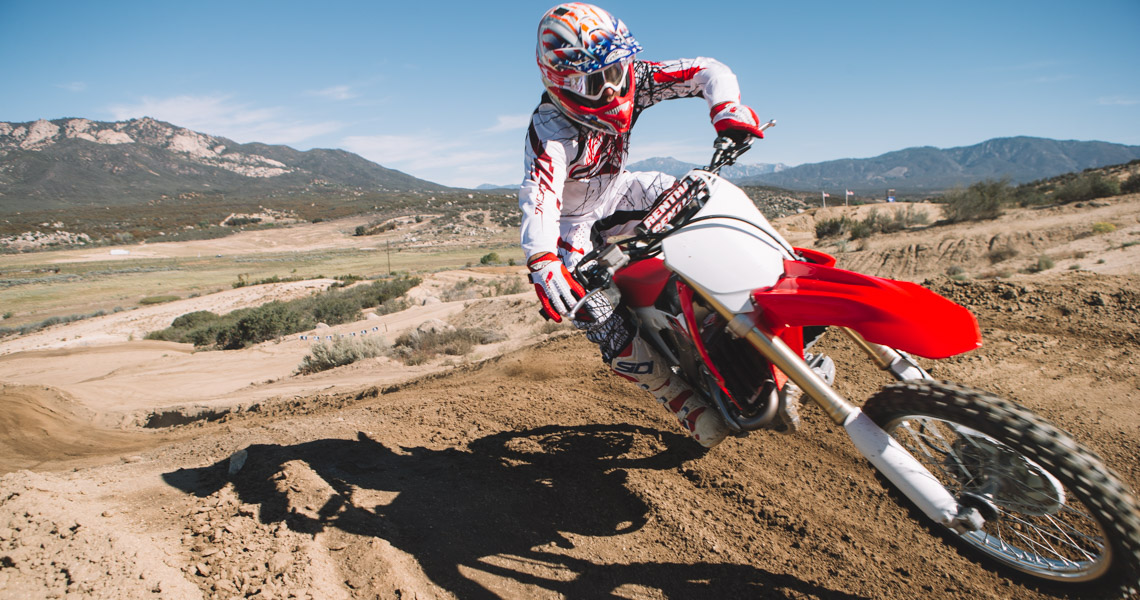




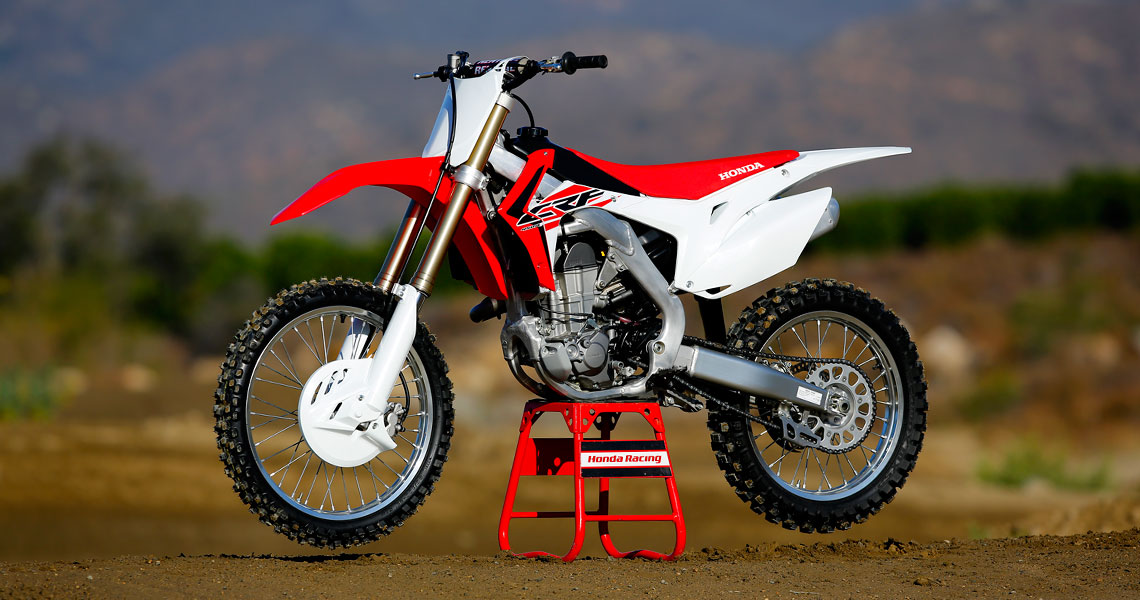

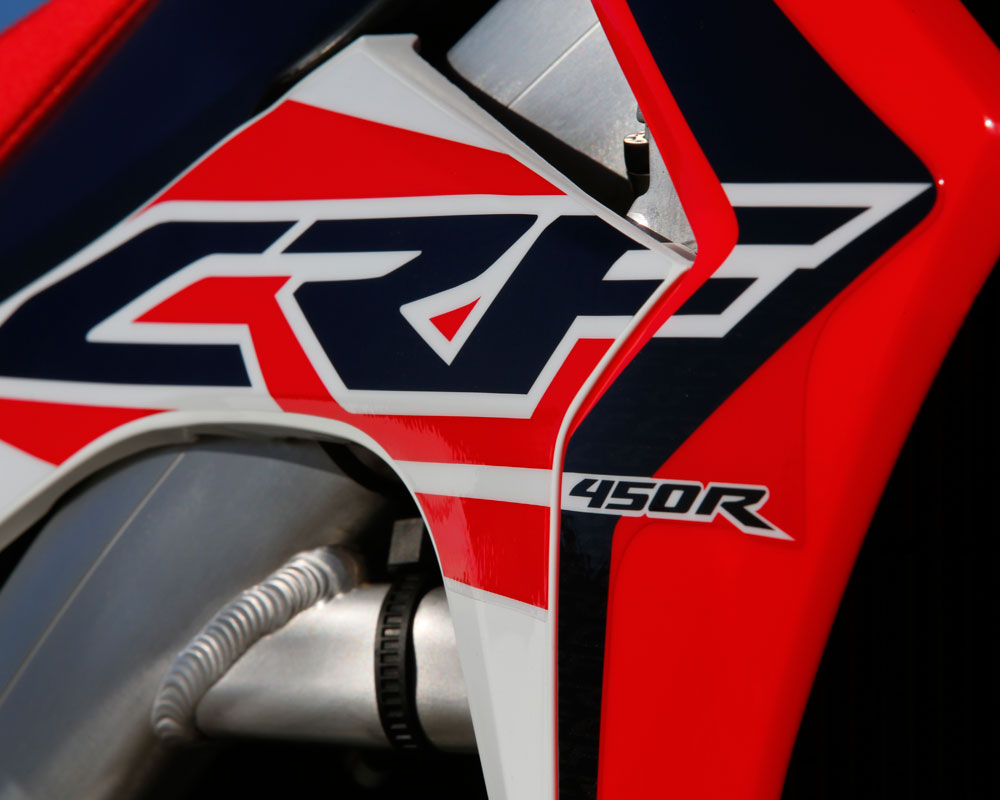



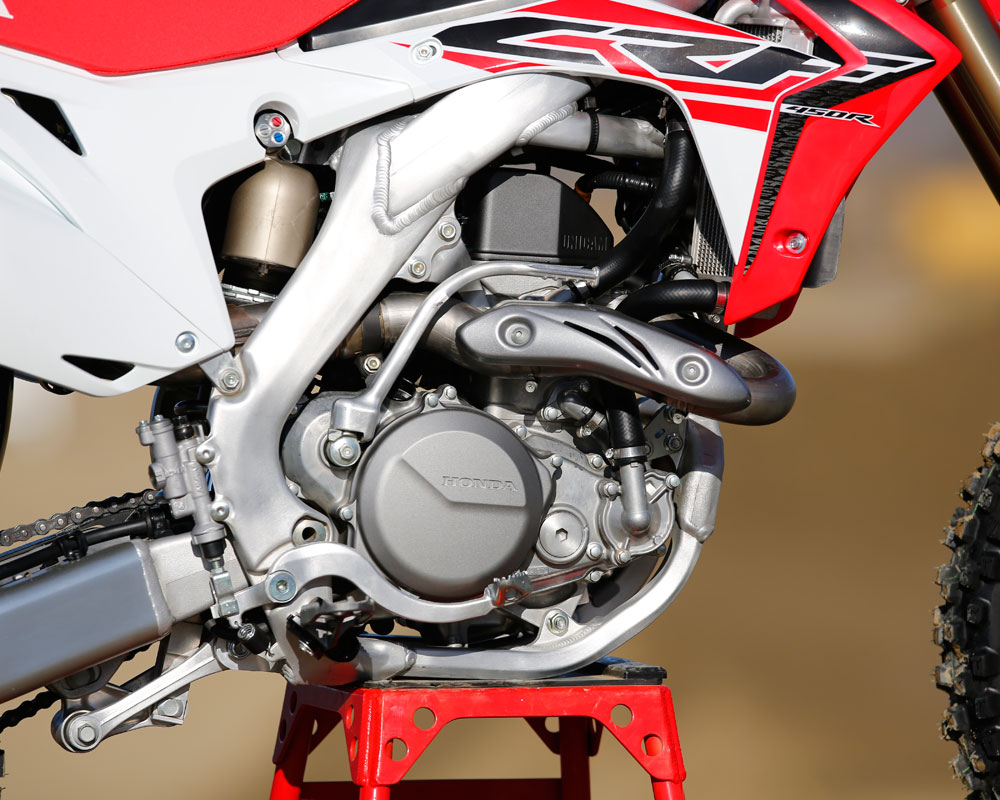
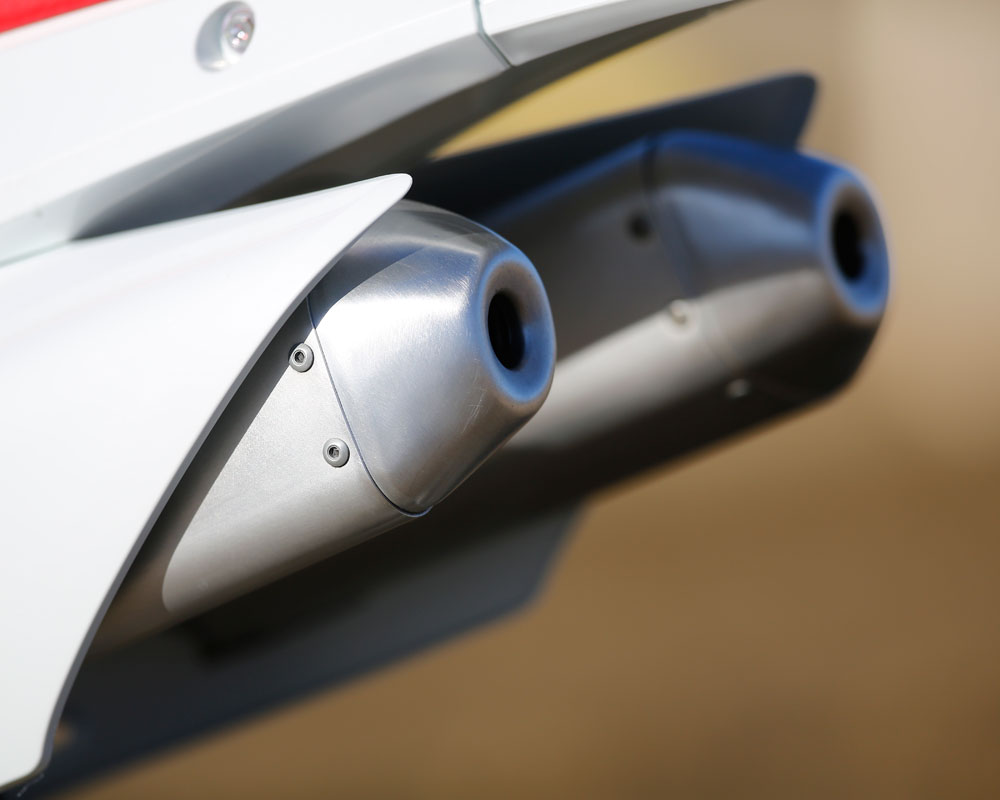

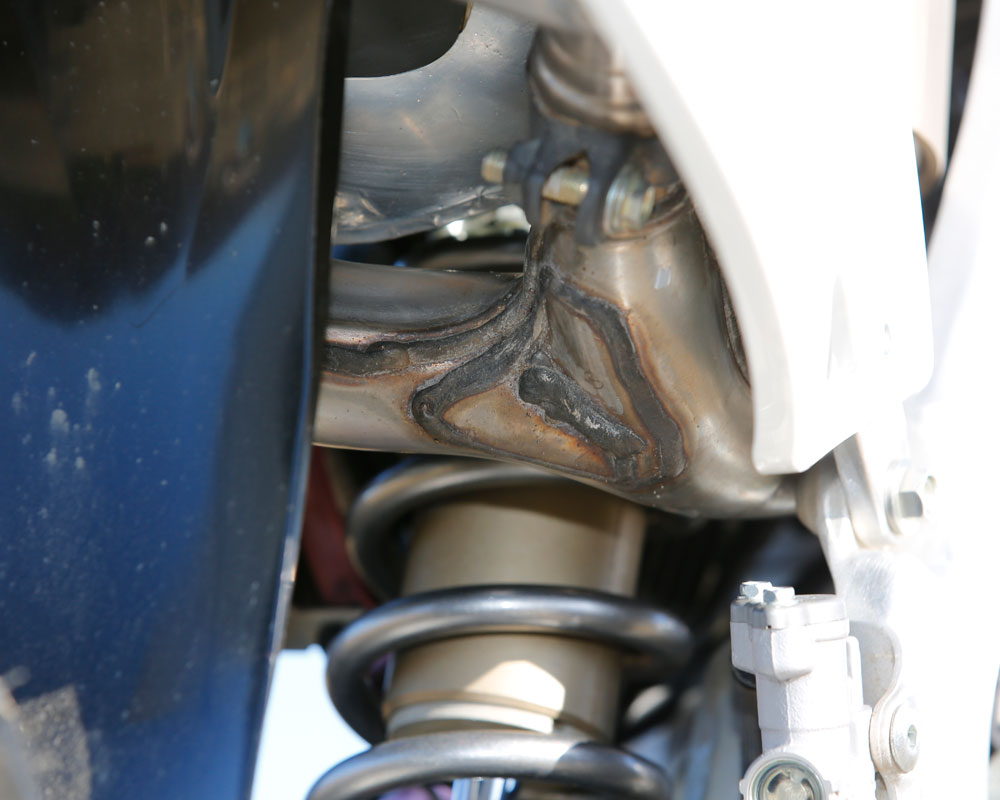
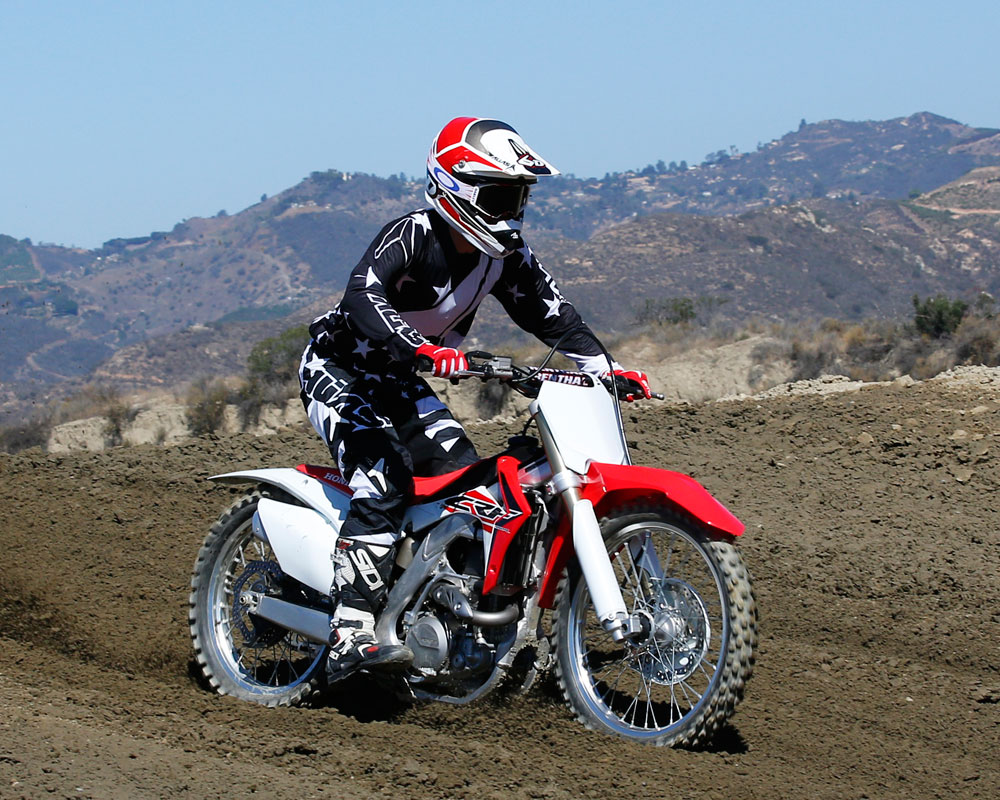
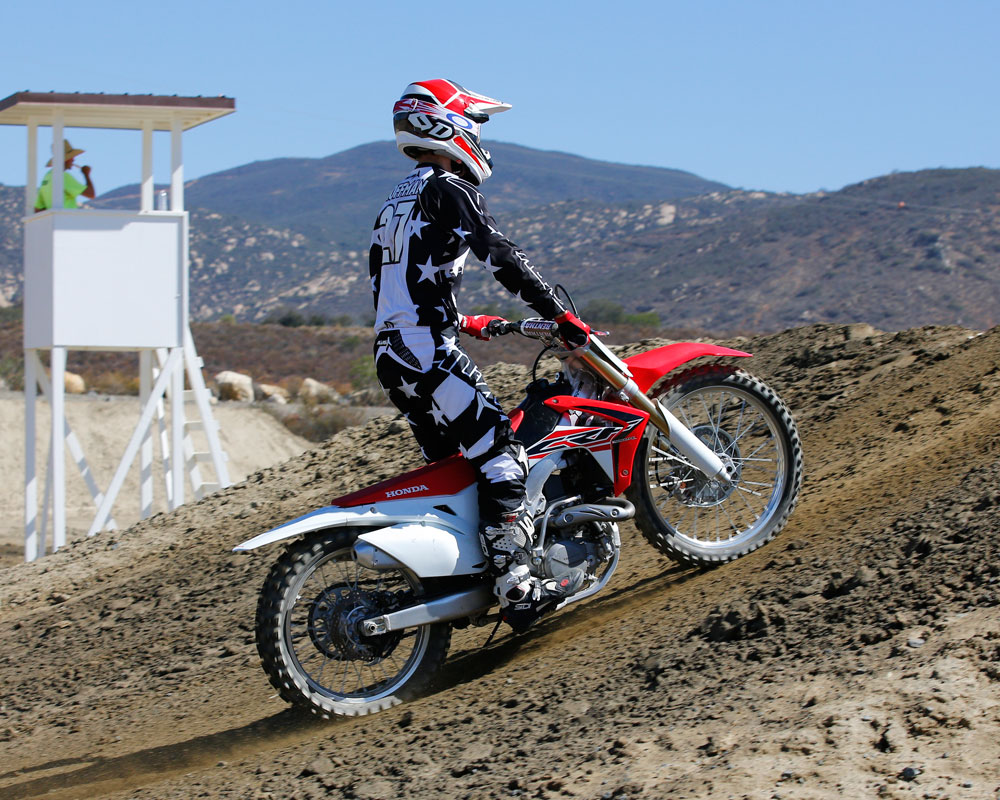
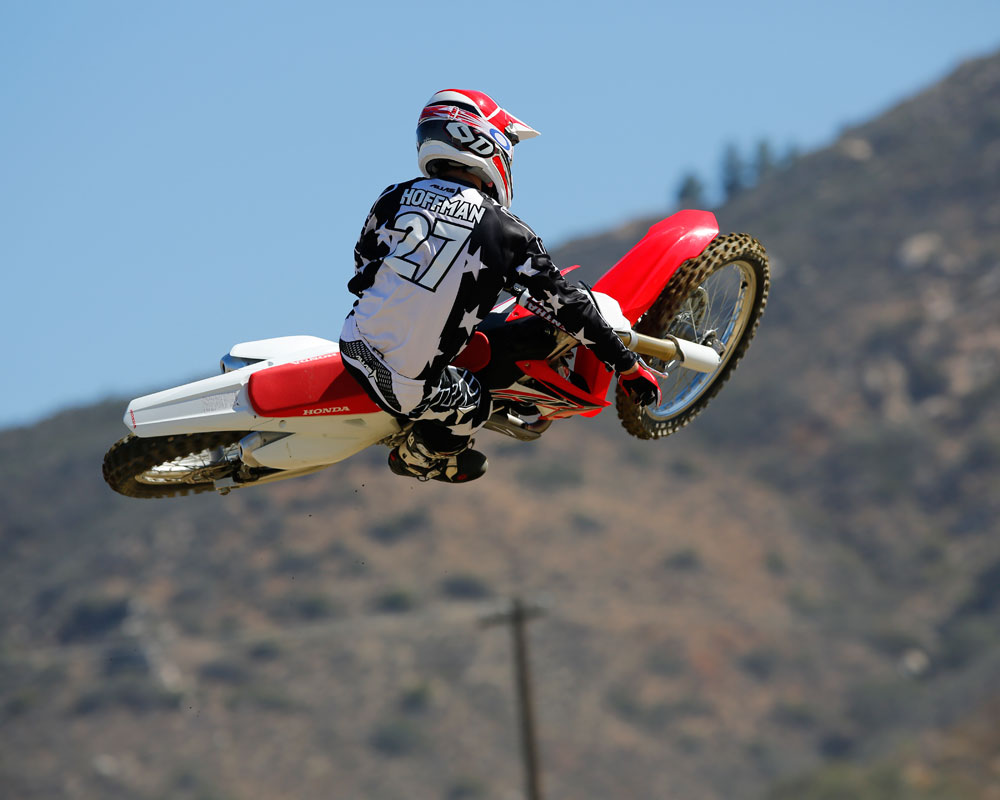

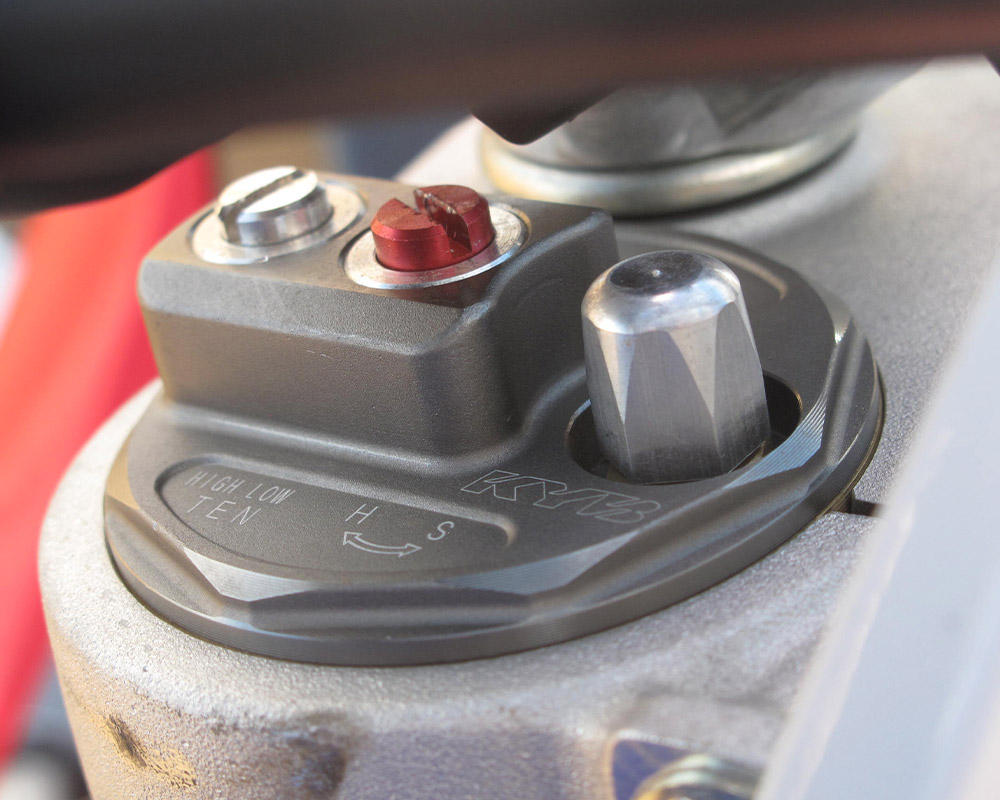
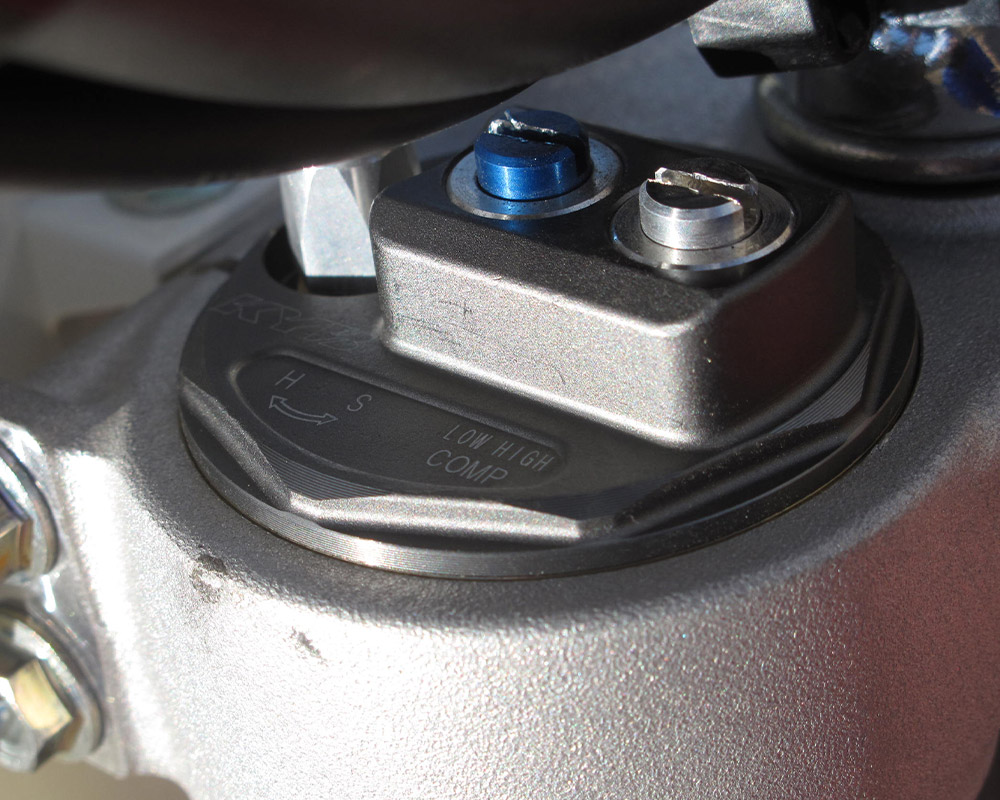


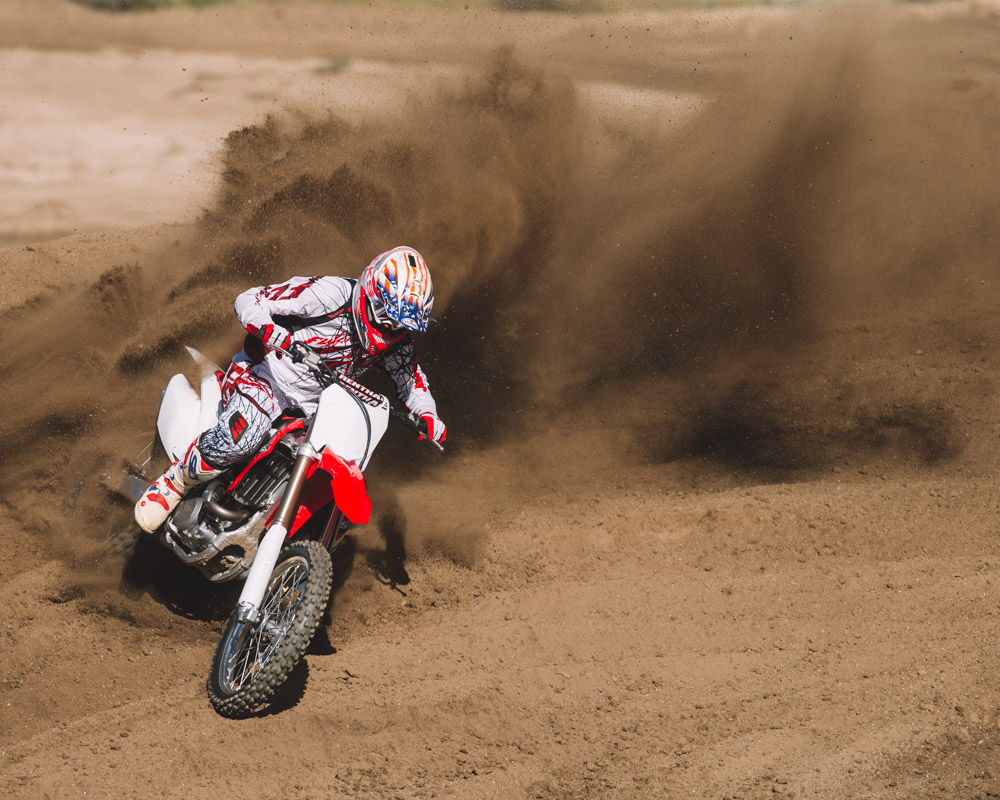
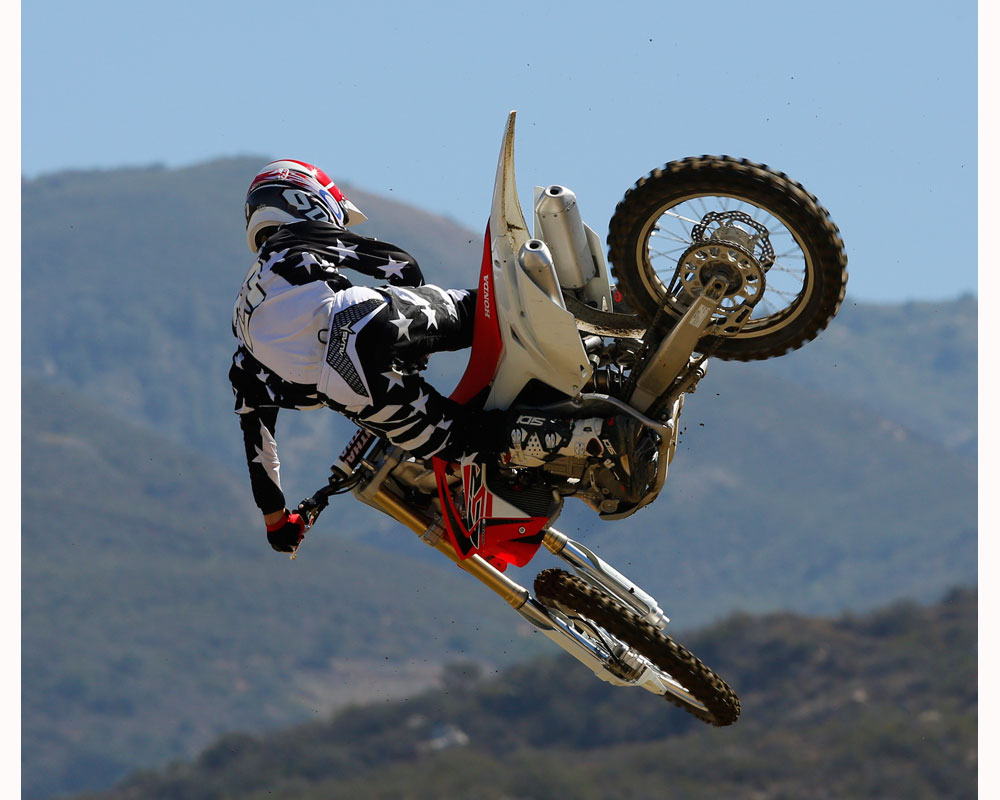
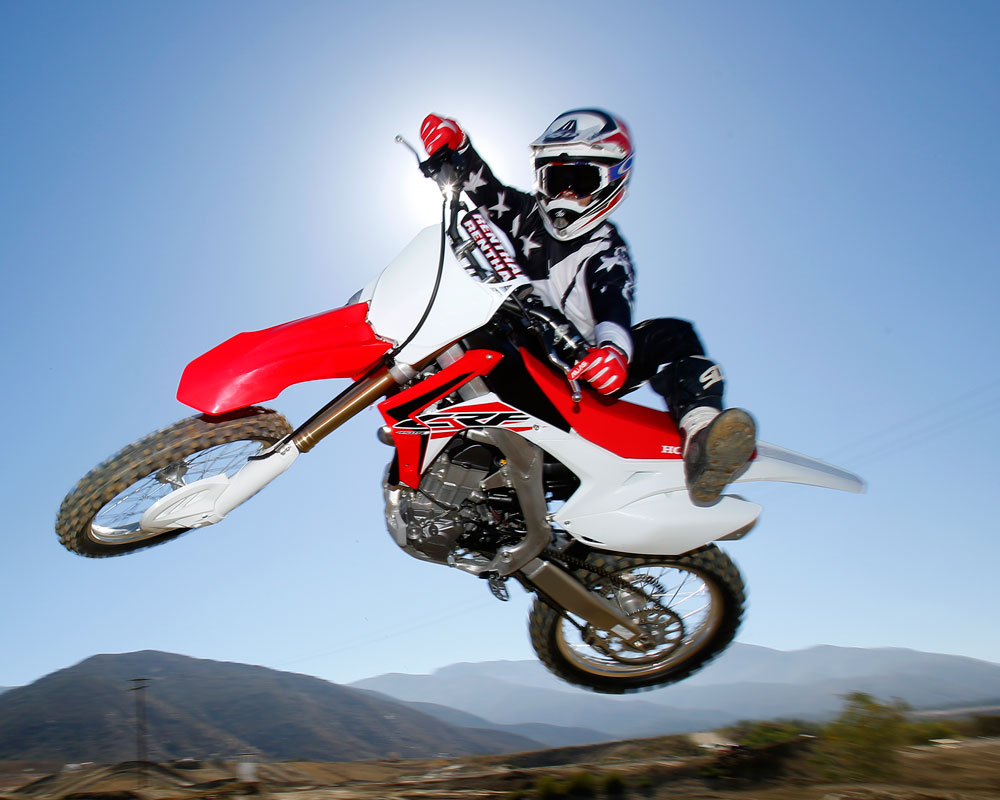
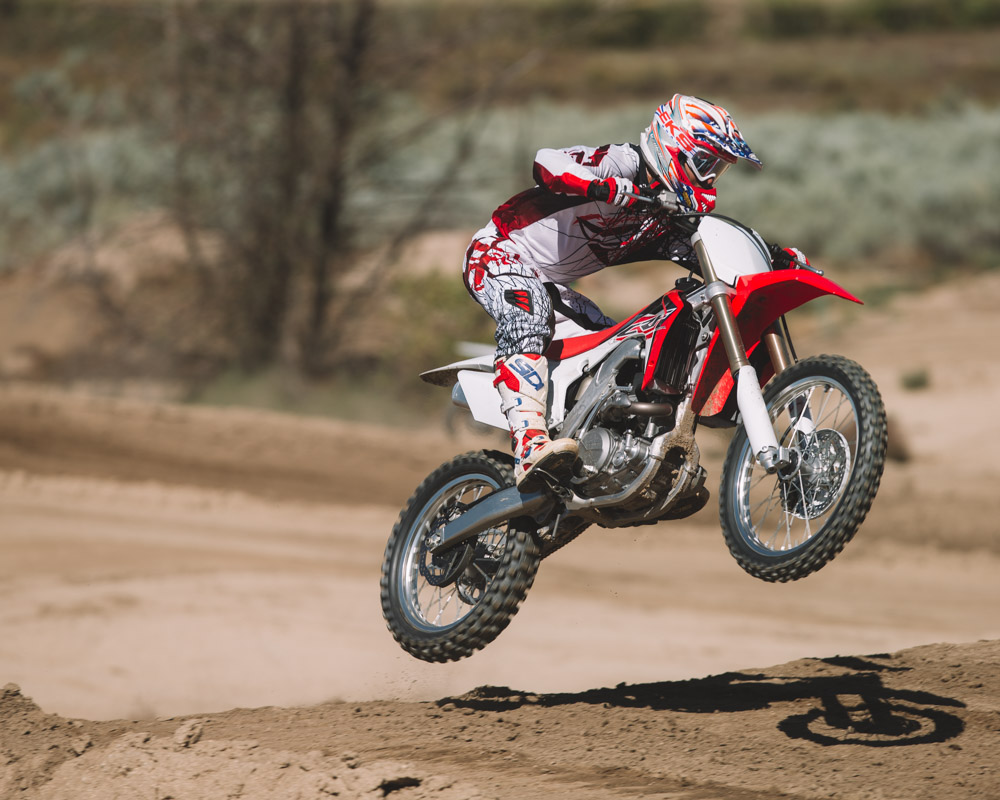
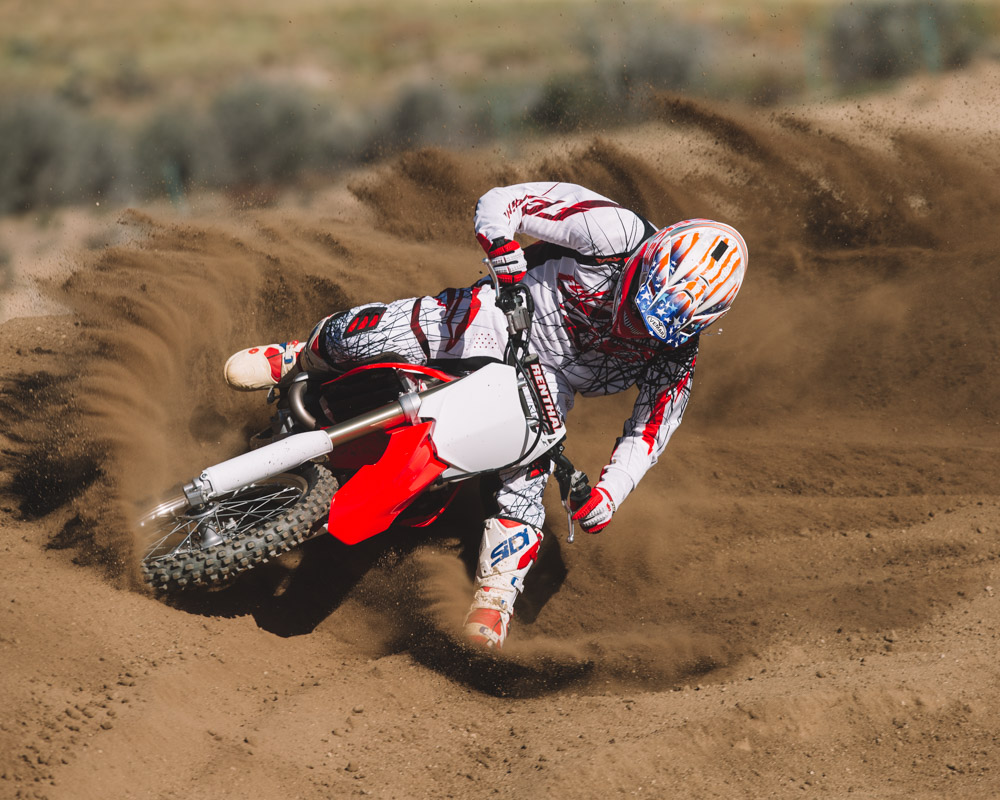


2 Responses to “2016 Honda CRF450R”
Matthew Cronin
Quick question. in the Endo you stated the famous Honda durability seems to be wearing off. Anything noteworthy? You mentioned a dingy frame and observations on hardware. You break the thing?
Jimmy Lewis
This from our Honda expert Scott Hoffman: I can speculate the material or alloy they currently run is not as pure as in the past and appears to get dirty faster, gets dark spots in the frame and oxidizes a lot quicker then older CRFs I have owned. Stuff like clutch cables needed to be replaced more often if you wish to maintain the best pull, rims seem to bend or dent easier (this is on almost all bikes) spoke nipples rounded very easy after a few adjustments.
After 50hr my 2013 CRF450r was still tight but not as tight compared to a 2008 I had owned or the 2009 I had at 50 plus HR on. Still a better build then say a Suzuki but not above the other brands like in the past decades.